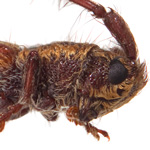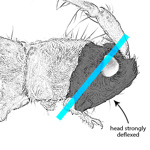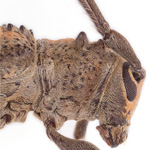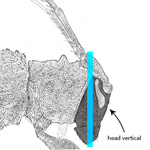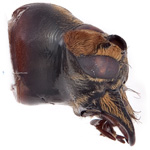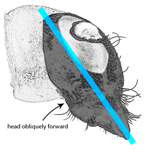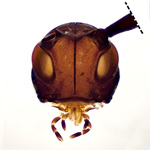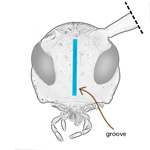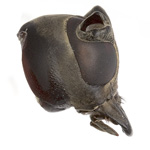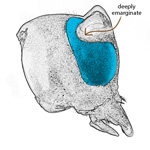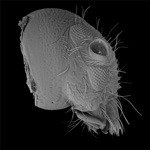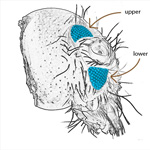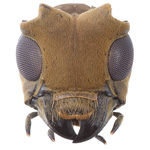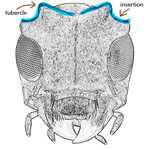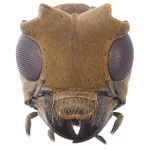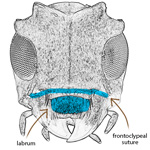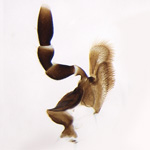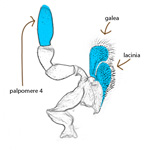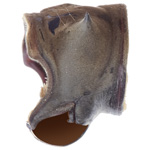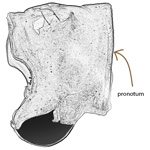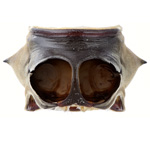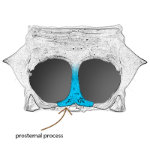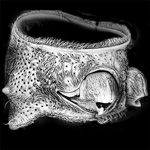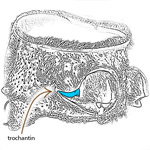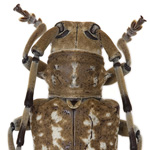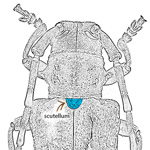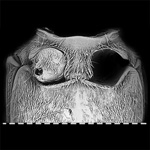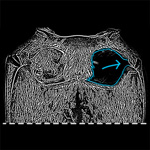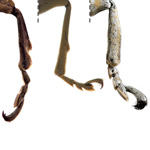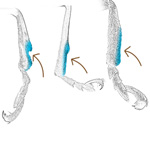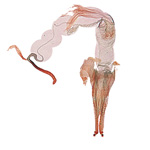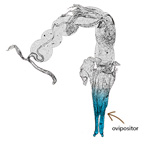Lamiinae
Lamiinae is the biggest subfamily of Cerambycidae with about 20,000 species classified in hundreds of genera worldwide. Seventy-four genera and about 550 described species are know from Australia but the species-level taxonomy remains a highly challenging project for future research.
Head
1. The frontal region strongly deflexed from behind the eyes or vertical. This is the case in most taxa but there are exceptions in some of the Tmesisternini tribe.
2. With complete median longitudinal groove marking deep internal endocarina, which continues into occipital area.
3. Eyes almost always deeply emarginate or divided into upper and lower parts, finely to very coarsely facetted.
4. Antennal insertions always exposed and supported by raised tubercles.
5. Frontoclypeal suture distinctly impressed. Labrum visible and free.
6. Maxilla always with distinct, setose galea and lacinia; apical maxillary palpomere fusiform (tapering at both ends; spindle-shaped) but triangular in males of some genera.
Thorax
1. Lateral pronotal carinae always absent, with secondary development in some Tmesisternini.
2. The prosternal process is always complete.
3. procoxal cavities almost always closed externally. Procoxae often projecting well below prosternum almost always with lateral extension and exposed trochantin.
4. Scutellum usually visible; mesoscutum often with stridulatory file or rarely absent (e.g. Rhytiphora).
5. Mesocoxal cavities usually laterally open.
Legs
1. Tibial spurs usually 2-2-2, well developed, rarely reduced to 1 or 0 on some pairs of legs. Protibia with oblique band of dense setae usually within pubescent groove (antennal cleaner) on inner face, mesotibia with similar structure on outer face.
Ovipositor
1. usually long and flexible with short subapical styli.
